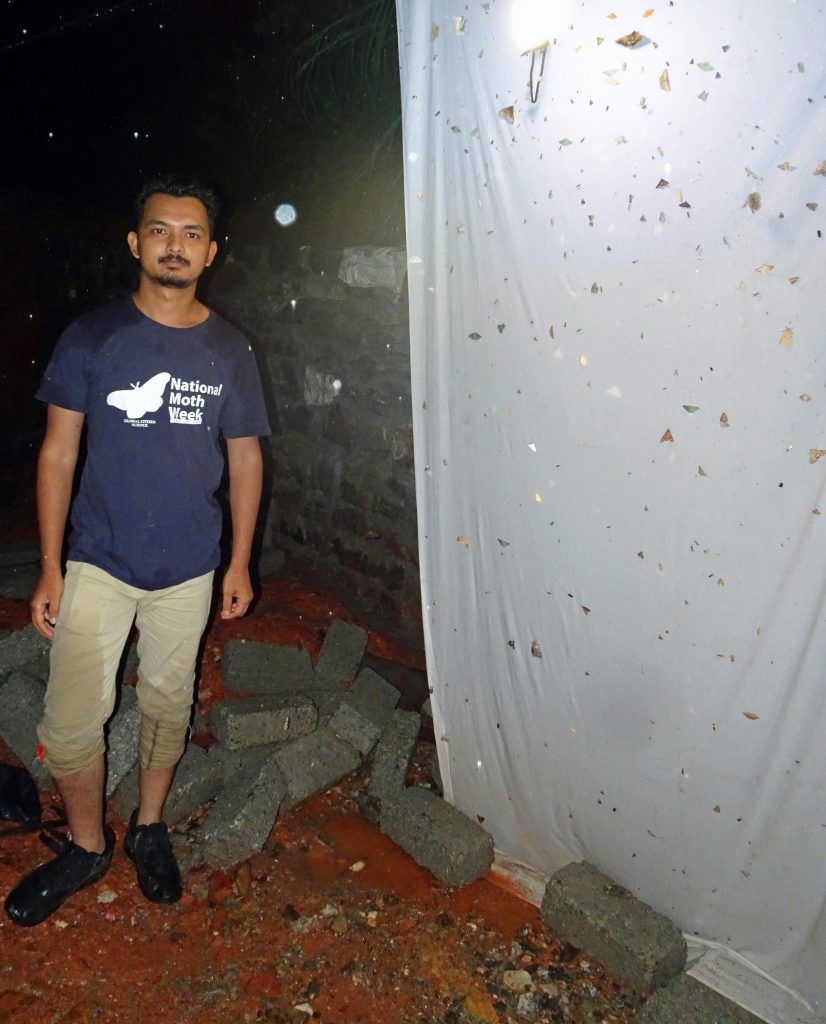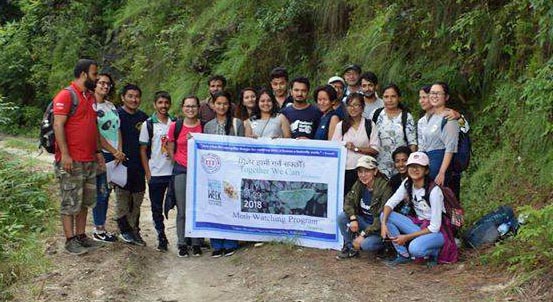
I am Sajan KC from Nepal. I will be 26 this July and I love Lepidoptera. A butterfly or a moth, what difference does it make?
I first came across mothing in 2017. It was a time when I used to be studying all insects around me in general, so I wasn’t quite only into mothing, and would snap shots of whatever 6-legged creature I came across.
Attacus atlas and Actias luna. Yes, these two species are the ones that grew my love toward moths. Before, I used to find moths rather dull and mundane. No hard feelings there. And I had a rather rigid preference toward studying butterflies. The day I stumbled across these two moth species online, I began rooting for them right away. Although not before long, I found out that Actias luna is an exclusive New World species, but I could nevertheless find two of its many cousins here in my region: Actias selene and Actias maenas.
I have seen Attacus atlas, in Kathmandu last year, but the Actias has always eluded me so far. A friend of mine and his better-half, with whom I was mothing last year, told me they saw one on the porch outside when I was guarding the light set-up not far away. Unfortunately, it was gone by the time I reached there. No, they weren’t fooling around me.
Well, I mostly go hunting (photographing) for butterflies during the day. I have a dandy digital collection of them on my laptop. But I certainly welcome moths which visit my porch light at night, or the day flying ones which settle on flowers giving me a break from the butterflies every now and then – especially those Nyctemera adversata. They seem to be everywhere from February to December. One could easily confuse them with Pierid butterflies.
Today, I have long stopped caring about the color/beauty of a lepidoptera. Every species has its unique, intrinsic value and beauty. No matter an otherwise puny looking moth, like Spoladea recurvalis or a gaudy big one, like Iotaphora iridicolor. It doesn’t matter to me anymore. A moth is a moth.
I came across National Moth Week on Facebook. And when I knew about it, I gave no second thought and registered for a tentative event right away. One thing led to another, and I ended up hosting a full-fledged hiking event in 2018 on the occasion, sponsored by “Together We Can,” an NGO I was working with. It was held in Shivapuri Nagarjuna National Park in Kathmandu on 29th of July that year. On my birthday! Well, what better way to celebrate a birthday? I had on a blue National Moth t-shirt, a wide smile on my face, sharing my knowledge among the participants who had on a round paper badge with the National Moth logo on it on their chests. We had 22 participants in total, all equally enthused to learn about moths. Stuff like how to tell them from butterflies and the other nitty-gritties. The program was a success, at heart. Some of them are still following up today.

Then last year in 2019, the entire July, I did a private mothing event with a light set-up in my village Raipur, Tanahun and hometown Pokhara, Kaski. Along with the aforementioned couple foreigner friends. They had a whole different level of experience than I. The set-up I used was theirs in fact, and they were munificent enough to leave it for me before they departed. I had made a separate post on it on the NMW blog as well. I had recorded a whopping 300 species during merely a month.
Regarding the IDs, I always keep the e-copies of Toshiro Haruta’s Moths of Nepal volumes (1992-2000) at hand. There are 6 of them. All with nice pictures of spread specimens in their natural sizes. The outdated or the mistaken IDs are corrected by Colin Smith in his Lepidoptera of Nepal (2010). This one was gifted to me by Marcus Cotton of Tiger Mountain, Pokhara when I was there last year with Colin Smith himself and Surendra Pariyar.
This is my third year in NMW. And we’re in the third month of lockdown here in Nepal. Things are as strange as they could be. It’s difficult to organize a gathering in such precarious times, but that’s not mandatory for mothing, is it? Cast a light in the dark of the night, and a moth is bound to crash onto you.
When I was offered the chance to be the country coordinator for NMW in Nepal this year, I couldn’t be happier. Mothing wasn’t done quite extensively in Nepal until Toshiro Haruta in 1990. Then I suppose there was a huge lag in the middle with only a scarce number of species being added to his list.
Certainly, Nepal needs more researchers. In recent times though, I sense more and more students willing to learn about insects, including moths. Most of them are well aware about NMW already and are eagerly looking forward to it. So, it’s going to be an honor leading and conducting them to mothing in any kind of scenario they find themselves. Be that by helping them set up their light devices or identifying the species they photograph, or reminding them of some species (like Gazalina) which they should leave alone while mothing lest their scales should cause blindness, or by sharing my understanding on moths, although, I’m far from calling myself an expert.
And well, I myself will be mothing with the light setup from last year. This time, though, I will probably be alone. But I’m equally excited to see what’s awaiting me this year. There are over 3,900 moth species recorded in Nepal (Smith, 2010), and I believe there are certainly many more left out.
Sajan KC